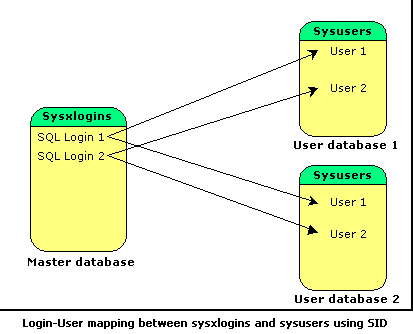Hugo is a powerful static website generator. It works by taking the content of your website and the desired templates as input from the user and converts them into a full-fledged HTML website. This tool is written in the Go programming language. It is very famous for the speed and flexibility that it offers.
Here at Ibmi Media, as part of our Server Management Services, we regularly help our Customers to perform related Open Source Software Installation queries on Linux Systems.
In this context, we shall look into install and use Hugo tool on a Linux Mint 20 system.
Steps to install Hugo on Linux Mint 20
If you want to install Hugo on your Linux Mint 20 system, then you need to perform the steps outlined below.
1. Update system apt
Start by performing a system update with the following command:
$ sudo apt update2. Install Snap Daemon Package Manager
Now, you need to install the Snap Daemon on your system with the command shown below:
$ sudo apt install snapd3. Install Hugo
Now, you can install Hugo on your system while making use of the Snap Package Manager with the command that follows:
$ sudo snap install hugo4. Create a Website Using Hugo
First, create a new website named web1.doamin.com using the hugo command, as shown below:
$ hugo new site web1.domain.comYou should get the following output:
Congratulations! Your new Hugo site is created in /root/web1.domain.com.
Just a few more steps and you're ready to go:
1.Download a theme into the same-named folder.
Choose a theme from https://themes.gohugo.io/ or
create your own with the "hugo new theme <THEMENAME>" command.
2. Perhaps you want to add some content. You can add single files
with "hugo new <SECTIONNAME>/<FILENAME>.<FORMAT>".
3. Start the built-in live server via "hugo server".
Visit https://gohugo.io/ for quickstart guide and full documentation.You can see the list of all files and directories generated by Hugo with the following command:
$ ls web1.domain.comOutput:
archetypes config.toml content data layouts static themes5. Create Your First Page
Now, change the directory to your website and create a new page named main.md with the following commands:
$ cd web1.domain.com
$ hugo new main.mdYou should get the following output:
/root/web1.domain.com/content/main.md createdNext, edit the main.md page and add some content:
$ nano content/main.mdAdd the following lines at the end of file:
# Test Page
This is my first test page.Save and close the file when you are finished.
6. Download and Install a Theme
First, change the directory to themes and download the Hugo theme with the following command:
$ cd web1.domain.com/themes
$ wget https://github.com/digitalcraftsman/hugo-strata-theme/archive/master.zipOnce downloaded, unzip the downloaded file with the following command:
$ unzip master.zipNext, rename the extracted directory with the following command:
$ mv hugo-strata-theme-master hugo-strata-themeNext, copy the sample content from the config.toml file located inside themes directory to the default config.toml file:
$ cat hugo-strata-theme/exampleSite/config.toml > ../config.tomlNext, edit the config.toml file with the following command:
$ nano ../config.tomlChange the base URL and define your page name as shown below:
baseurl = "/"
[[menu.main]]
name = "main"
url = "main"
weight = 5Save and close the file, then create a landing page layout file with the following command:
$ nano /root/web1.domain.com/layouts/index.htmlAdd the following lines:
{{ define "main" }}
{{ if not .Site.Params.about.hide }}
{{ partial "about" . }}
{{ end }}
{{ if not .Site.Params.portfolio.hide }}
{{ partial "portfolio" . }}
{{ end }}
{{ if not .Site.Params.recentposts.hide }}
{{ partial "recent-posts" . }}
{{ end }}
{{ if not .Site.Params.contact.hide }}
{{ partial "contact" . }}
{{ end }}
{{ end }}Save and close the file.
7. Build Your Website
Now, change the directory to your website and build your Hugo website using the following command:
$ cd /root/web1.domain.com
$ hugoYou should get the following output:
Start building sites …
WARN 2020/12/06 09:21:44 Page.Hugo is deprecated and will be removed in a future release.
Use the global hugo function.
WARN 2020/12/06 09:21:44 Page.RSSLink is deprecated and will be removed in a future release.
Use the Output Format's link, e.g. something like:
{{ with .OutputFormats.Get "RSS" }}{{ .RelPermalink }}{{ end }}
| EN
-------------------+-----
Pages | 7
Paginator pages | 0
Non-page files | 0
Static files | 26
Processed images | 0
Aliases | 2
Sitemaps | 1
Cleaned | 0Next, start the Hugo server by specifying your server IP as shown below:
$ hugo server --bind=0.0.0.0 --baseUrl=http://your-server-ip -D -FYou should get the following output:
Start building sites …
WARN 2020/12/06 09:22:02 Page.Hugo is deprecated and will be removed in a future release.
Use the global hugo function.
WARN 2020/12/06 09:22:02 Page.RSSLink is deprecated and will be removed in a future release.
Use the Output Format's link, e.g. something like:
{{ with .OutputFormats.Get "RSS" }}{{ .RelPermalink }}{{ end }}
| EN
-------------------+-----
Pages | 11
Paginator pages | 0
Non-page files | 0
Static files | 26
Processed images | 0
Aliases | 3
Sitemaps | 1
Cleaned | 0
Built in 35 ms
Watching for changes in /root/web1.domain.com/{archetypes,content,data,layouts,static,themes}
Watching for config changes in /root/web1.domain.com/config.toml
Environment: "development"
Serving pages from memory
Running in Fast Render Mode. For full rebuilds on change: hugo server --disableFastRender
Web Server is available at http://69.87.216.179:1313/ (bind address 0.0.0.0)Press Ctrl+C to stop
8. Access Hugo Web UI
Now, open your web browser and type the URL http://your-server-ip:1313. You should now see Hugo dashboard.
How to uninstall Hugo from Linux Mint 20 ?
If you just want to remove Hugo from your Linux system, then you only need to execute the following command in your terminal:
$ sudo snap remove hugo[Need assistance in fixing missing packages Software during Software Installation on Linux Systems? We can help you. ]
Conclusion
This article covers steps to install Hugo on your Linux Mint system. In fact, Hugo is an open-source static website generator designed for small projects and informative sites.
How to Install Hugo Using The Apt-get Utility ?
1. The first thing when installing Hugo using the apt-get is updating your server’s apt index:
$ sudo apt-getupdate2. Once the package index is updated, run the command below to install Hugo:
$ sudo apt-get install hugo3. Hugo will be installed automatically on your server. To check the Hugo version installed, run the command below:
$ sudo hugo version
This article covers steps to install Hugo on your Linux Mint system. In fact, Hugo is an open-source static website generator designed for small projects and informative sites.
How to Install Hugo Using The Apt-get Utility ?
1. The first thing when installing Hugo using the apt-get is updating your server’s apt index:
$ sudo apt-getupdate2. Once the package index is updated, run the command below to install Hugo:
$ sudo apt-get install hugo3. Hugo will be installed automatically on your server. To check the Hugo version installed, run the command below:
$ sudo hugo version












